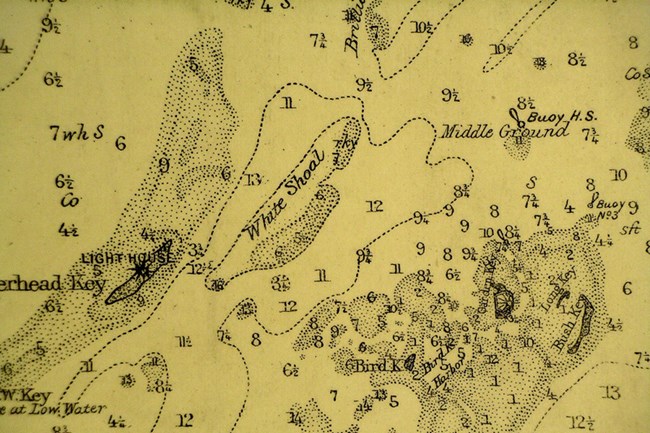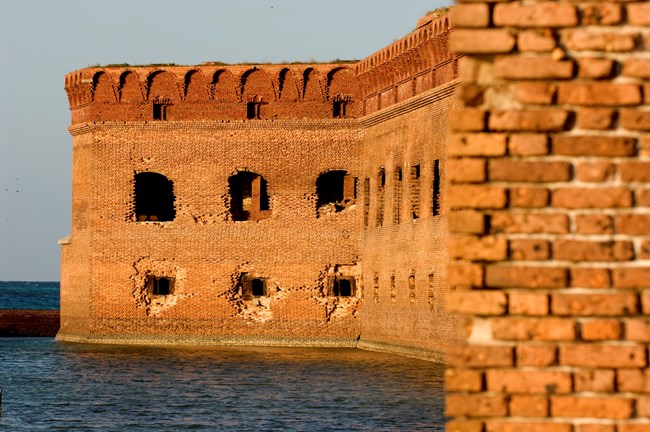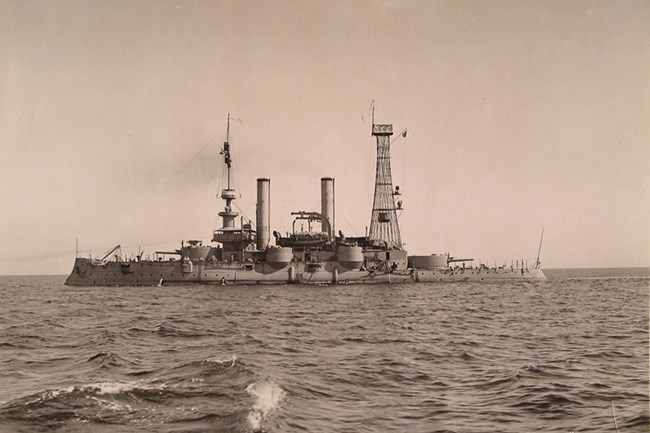
NPS 
The Shipping CorridorSince the Dry Tortugas were discovered in 1513 by Juan Ponce de Leon, explorers and merchants have traveled through the Dry Tortugas to and from the Gulf Coast. The collection of islands soon began appearing on Spanish maps and charts because the route was frequently used for Spanish ships returning home from Veracruz, the Caribbean, or the Gulf Coast of Florida. While Florida remained under Spanish rule goods were transported across the Atlantic in exchange for gold and silver from the New World. 
Coastal DefenseOnce Florida was acquisitioned in 1822, the United States began planning the creation of a large fort in the Dry Tortugas. The United States believed the 75-mile-wide straits connecting the Gulf Coast and Atlantic Ocean were critical to protect, as any forces who tried to occupy the area could gain control over Gulf Coast trading. 
ShipwrecksThe Dry Tortugas have been the site where hundreds of ships have wrecked, stranded, or sustained causalities since its discovery in 1513. The first documented ship wreck occurred in 1622 with the Spanish vessel, Nuestra Senora del Rosario, a 600 ton galleon vessel. The ship was a part of a Spanish convey en route from La Habana, Cuba to Spain. After getting caught in a hurricane, a number of ships became scattered along the Florida straits, including Nuestra Senora del Rosario. _2.jpg?maxwidth=650&autorotate=false)
Submerged Cultural ResourcesThe unique location of the Dry Tortugas has brought a large and diverse array of ships through its waters. Early Spanish explorers, ships participating in international trade, and other cargo ships bound for Fort Jefferson all made their way through the strategic corridor. However, the Dry Tortugas “ship trap” has also claimed many of these vessels. As a result, a stunning collection of submerged cultural resources lay underneath the surface waters of the Dry Tortugas. 
Aids to NavigationUpon acquisition of Florida from the Spanish in 1821, the US government was immediately interested in constructing a lighthouse in the Tortugas to protect mariners from the reefs. Construction of the first lighthouse in the Tortugas began on Garden Key in 1825. The light house, which was later replaced by the iron light atop Fort Jefferson, proved to be too short, too dim, and too far away from other reefs.In 1856, construction began on a taller light-house on Loggerhead Key. 150 feet tall and topped with a 1st order Fresnel lens (replaced with a 2nd order bivalve lens in 1909), the new light was observed at a distance of 53 miles. The 2nd order lens is now on display at the National Aids to Navigation School in Yorktown, VA. |
Last updated: February 24, 2025
